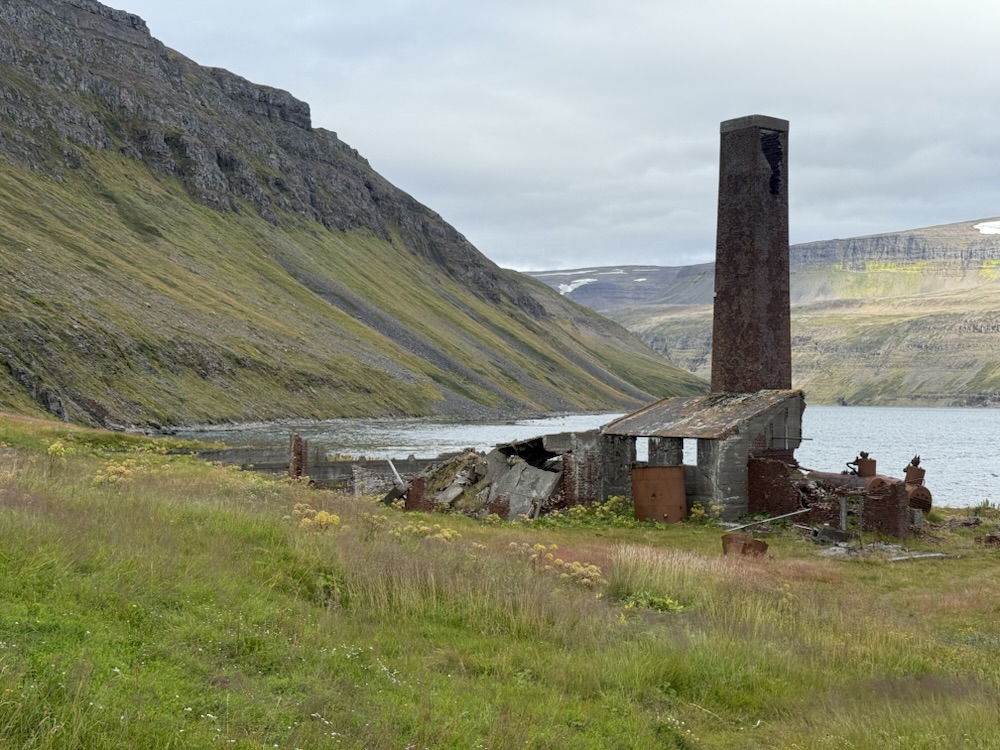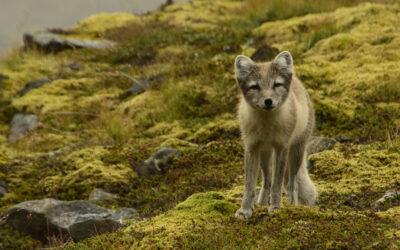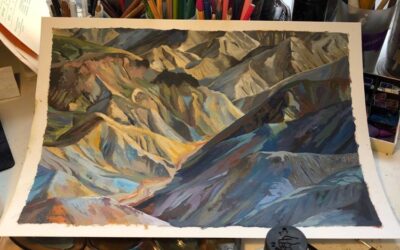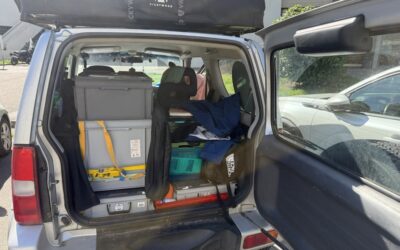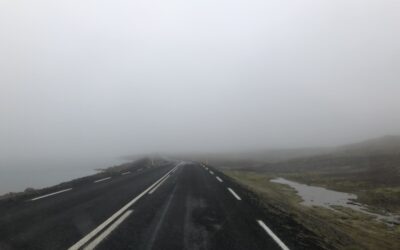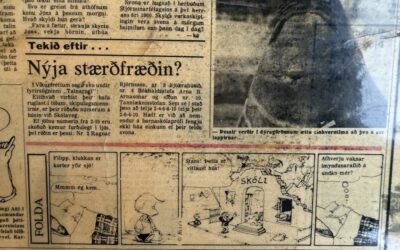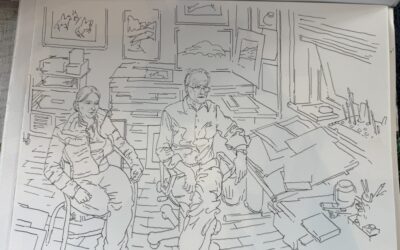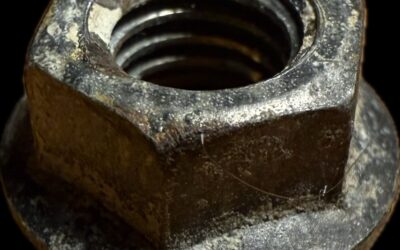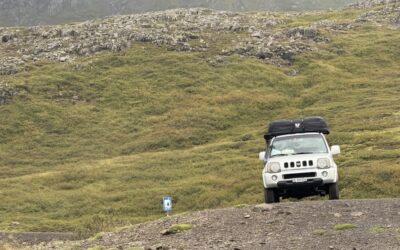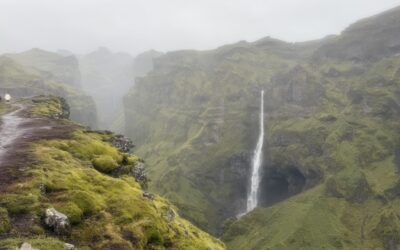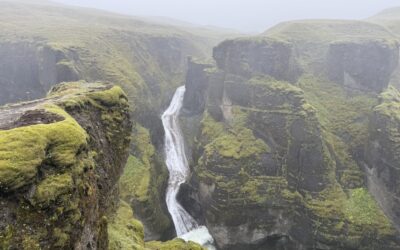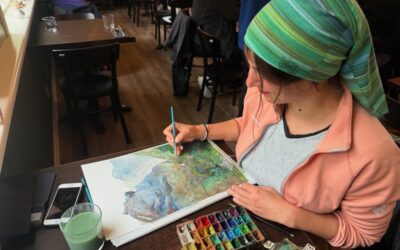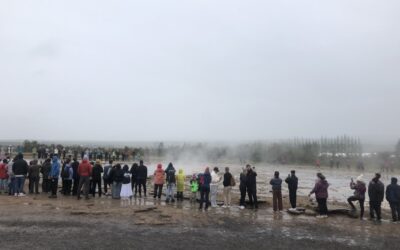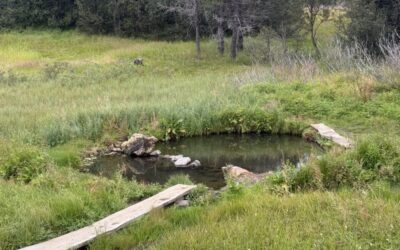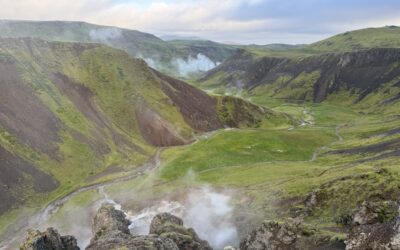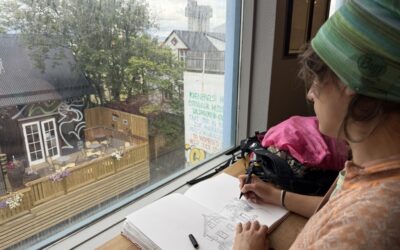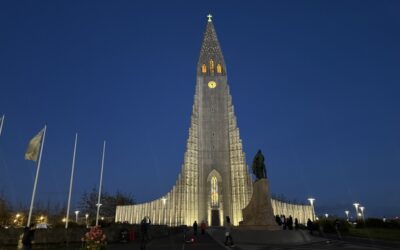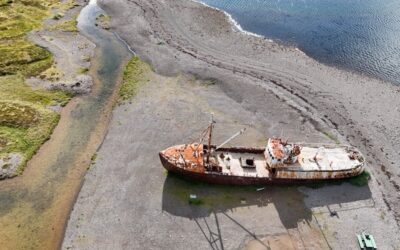📍 ///manufactured.barn.sabotaged
I take advantage of a nearby café to warm up and glean information on the weather, the region, and especially the possibility of visiting the former American base at Straumnesfjall. Verdict: complicated... Wind tomorrow, rain on Sunday.
With Hrólvur—always ready to answer our questions and pose for the notebook—we chat at length while Gabrielle draws.
Before that, we went to see the old whaling station of Hesteyri, a vestige of the region's industrial past. It's a strange atmosphere, facing these red walls still standing at the bottom of the bay.
On the shore, we had a stroke of luck: a few seals were lounging out of the water. We stopped and watched them in silence.
The highlight of the day? A glass of red wine with Hrólvur. Our first sip of alcohol since the Faroes: a warm, almost festive moment.
The evening ends with a walk towards the lighthouse. We don't reach it, but it doesn't matter: the weather is mild, the wind almost absent, the light unreal.
Straumnesfjall US Air Station Established by the United States in 1953 atop Straumnesfjall (Hornstrandir), this radar station monitored the North Atlantic and the strategic GIUK (Greenland–Iceland–UK gap) during the Cold War. Extremely isolated and exposed to the elements, it was abandoned in 1960. Today, only windswept ruins remain.
Hesteyri Whaling Station Built in 1894 by Norwegians (under the name Hekla), the station was among the first modern whaling bases in Iceland. Converted into a herring factory in the 1920s, it closed in 1940, marking the decline of the local community. Today, a chimney and red brick walls can still be seen, ghostly traces of this past.
#Inkavik #15August2025 #Hesteyri #Hornstrandir #Straumnesfjall #ColdWarIceland #HesteyriWhalingStation #IcelandHistory #WildIceland #SlowTravel #CarnetDeVoyage

